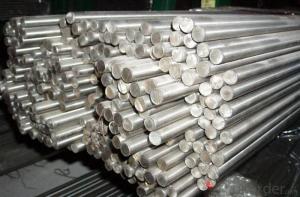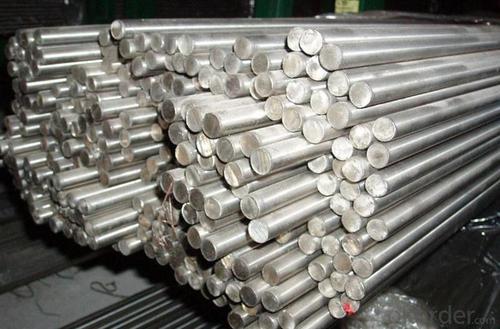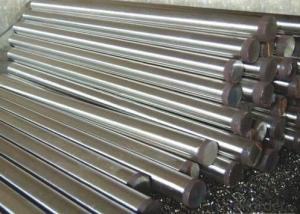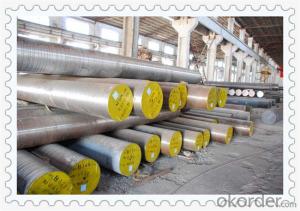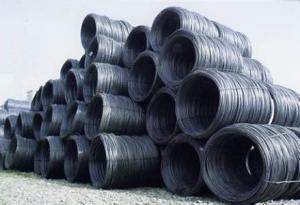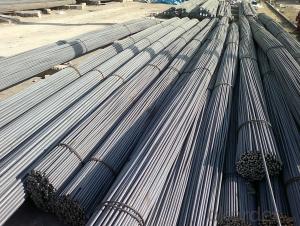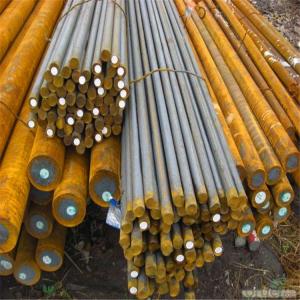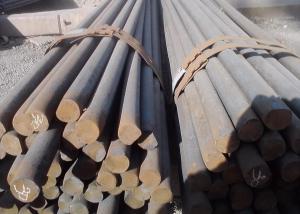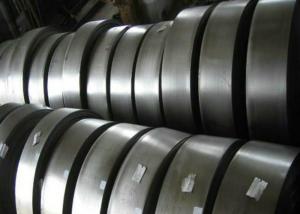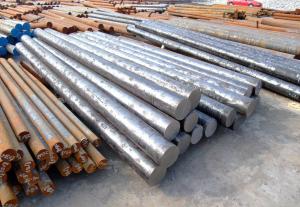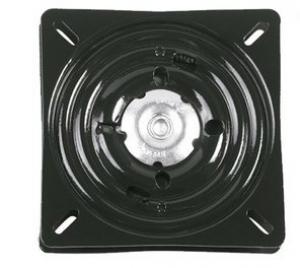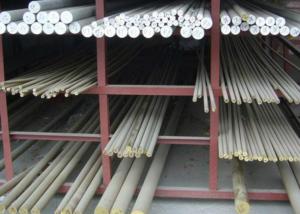100Cr6 Steel Hot Rolled Round Bar Steels
- Loading Port:
- Tianjin
- Payment Terms:
- TT OR LC
- Min Order Qty:
- 25 m.t.
- Supply Capability:
- 50000 m.t./month
OKorder Service Pledge
OKorder Financial Service
You Might Also Like
Specification
100Cr6 Steel Hot Rolled Round Bar Steels
Product Show:
Material | 52100/GCr15/100Cr6/SUJ2 | ||
Chemical Composition | Mechanical Properties(In Quenched & Tempered State) | ||
C | 0.95-1.05 | Tensile strength(MPA) | ---- |
Si | 0.15-0.35 | Yield strength (MPA) | -- |
Mn | 0.25-0.45 | Elongation(δ5/%) | -- |
Cr | 1.40-1.65 | Reduction in Area (ψ/%) | -- |
Mo | ≤0.10 | Impact (J) | -- |
P | ≤0.025 |
Hardness | HB170-207 HB207-229 HB270-390 HB229-285 HRC62-66 HRC61-66 HRC≈67 |
S | ≤0.025 | ||
Ni | ≤0.30 | ||
Cu | ≤0.25 | ||
Ni+Cu | ≤0.50 | ||
Competitive Advantage:
High wearing-resisting property
Good hardenability
High resistance to thermal properties.
Competitive price
Fast production leadtime
All the material are inspected with 3 times to meet the highly standards
Applications:
Bearing ring ,steel rolling mill ,machinery, 100Cr6 bearing steel ball is widely used in high-speed and
low-noise bearing, bicycle, motorcycle, automobile,bags, electronical Machine parts, engineering components
100Cr6 is a kind of common steel which is used to produce balls and rings of bearing. The product has characteristics of uniform-chemical composition, low percentage of harmful elements, high purity, well-distributed carbide, good surface quality. It also has characteristics of wide scope of plastic, stable heat-treatment quality, uniformed high hardness, high wear resistance , high strength of touching fatigue. It has excellent machining property afer spheroidize annealing.
Product Show:
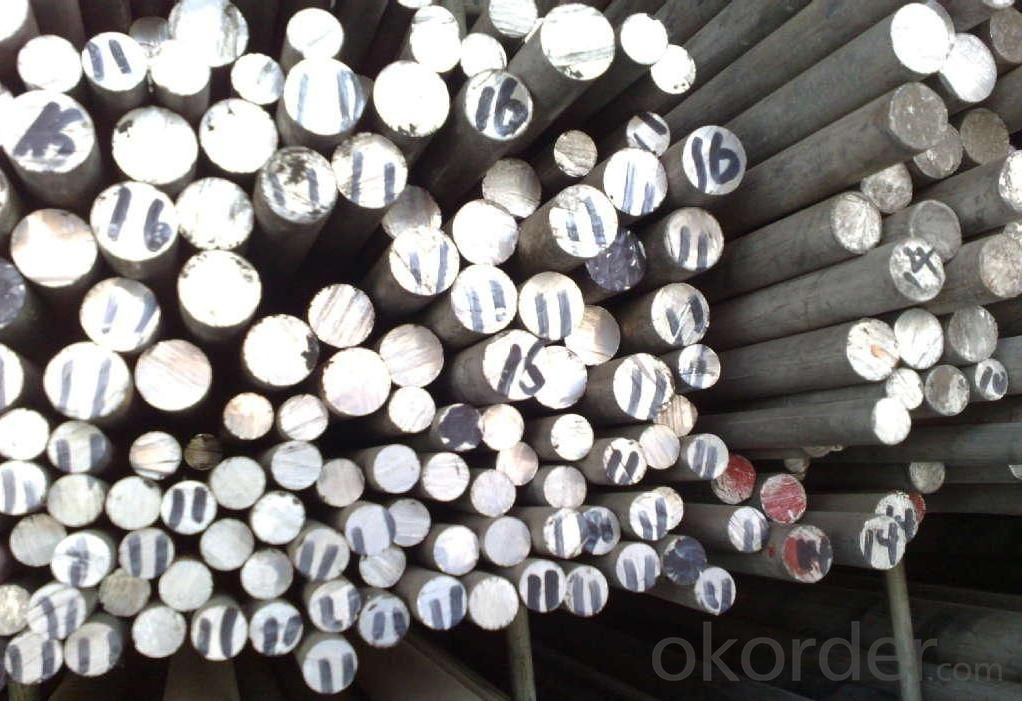
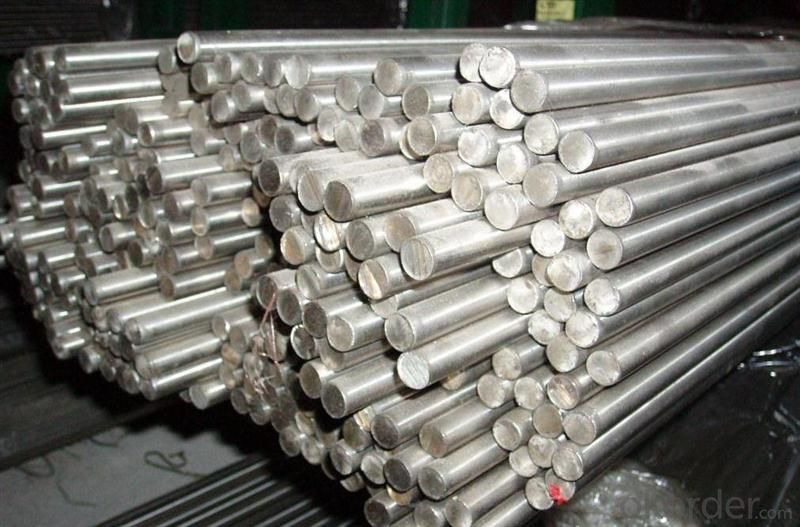
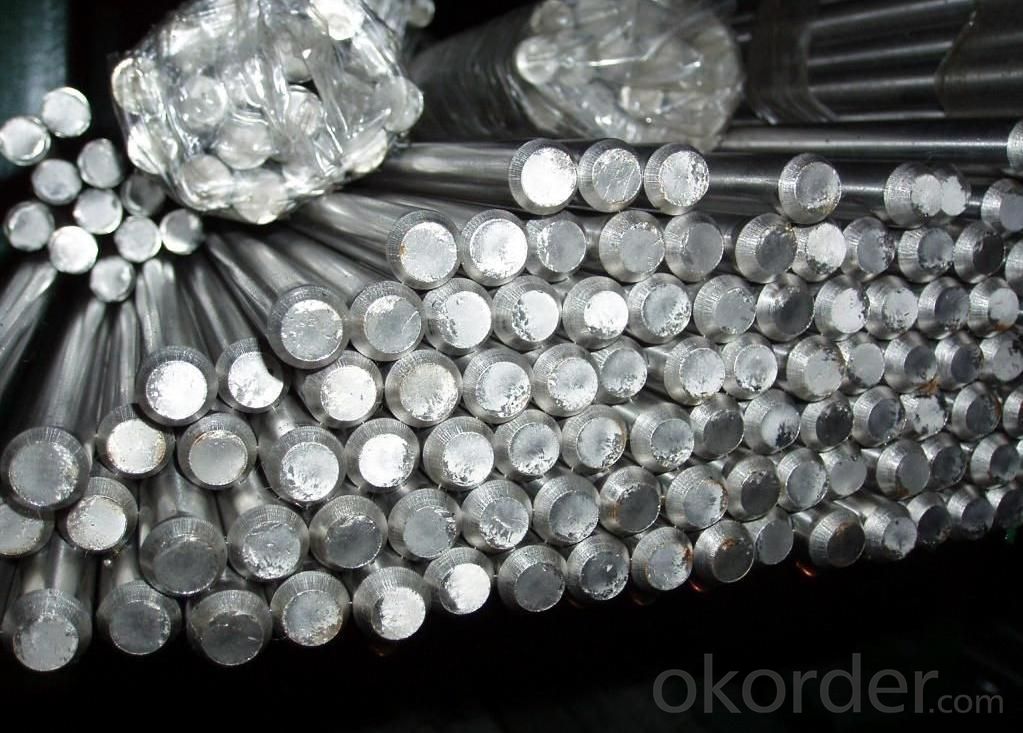
- Q: What are the specific requirements for special steel used in the mining industry?
- To ensure the durability, strength, and resistance to harsh conditions of special steel used in the mining industry, certain requirements must be met. Key requirements for this type of steel include: 1. High tensile strength is necessary to withstand heavy loads and resist deformation under extreme conditions. This enables the steel to endure the pressure, impact, and stress encountered during mining operations. 2. Excellent wear resistance is essential to prevent premature failure and increase the lifespan of mining equipment in abrasive environments. Rocks and ores can cause significant wear on the equipment. 3. High corrosion resistance is crucial in highly corrosive mining environments, such as underground mines or areas near water bodies. The steel should be able to withstand exposure to chemicals, moisture, and other corrosive agents to prevent rusting, pitting, and other forms of corrosion that weaken the steel. 4. Excellent toughness is required to withstand heavy impacts and vibrations that mining equipment is subjected to. If the steel is not tough enough, fractures can occur. The steel must be able to absorb energy from impacts and vibrations without fracturing, ensuring the safety and reliability of the equipment. 5. Good heat resistance is necessary to withstand high-temperature mining operations, such as smelting and refining processes. The steel should not lose its strength or undergo deformation under elevated temperatures. 6. Good machinability is important to allow for easy formation of complex shapes or structures. This facilitates the manufacturing process of mining equipment and components. Overall, meeting these requirements is crucial for ensuring the reliability, durability, and safety of mining equipment in demanding mining environments.
- Q: How does cryogenic treatment affect the toughness of special steel?
- Cryogenic treatment has a significant impact on the toughness of special steel. It involves subjecting the steel to extremely low temperatures, typically below -150 degrees Celsius, for an extended period. This process transforms the microstructure of the steel, resulting in improved mechanical properties, including increased toughness. During cryogenic treatment, the steel undergoes a process called martensitic transformation, where the carbon atoms in the steel lattice rearrange themselves. This transformation leads to the formation of additional carbides, which are responsible for strengthening the steel and increasing its toughness. These carbides act as barriers, impeding the propagation of cracks and enhancing the resistance of the steel to fracture. Furthermore, cryogenic treatment also reduces the presence of retained austenite, a metastable phase in steel that can negatively impact its mechanical properties. The transformation of retained austenite into martensite during cryogenic treatment further improves the toughness of the steel. The increased toughness of cryogenically treated special steel makes it suitable for various applications that require high strength and resistance to fracture. It enhances the steel's ability to withstand heavy loads, impacts, and harsh environments. Additionally, cryogenic treatment can improve the wear resistance and dimensional stability of special steel. It is important to note that while cryogenic treatment can significantly enhance the toughness of special steel, it is not a standalone solution. Other factors, such as the initial composition and heat treatment of the steel, also play a crucial role in determining its overall mechanical properties. Therefore, cryogenic treatment should be considered as a complementary process to optimize the toughness of special steel.
- Q: What are the limitations of using special steel in electrical applications?
- There are several limitations to using special steel in electrical applications. Firstly, special steel can be more expensive compared to other materials commonly used in electrical applications, such as copper or aluminum. This can make it less cost-effective, especially for large-scale projects. Another limitation is that special steel has a relatively high electrical resistivity compared to copper or aluminum. This means that it is less efficient in conducting electricity, leading to higher energy losses and lower overall efficiency in electrical systems. This can be particularly important in applications where energy efficiency is a priority, such as in power generation or transmission. Additionally, special steel is generally less malleable and ductile compared to other materials like copper. This makes it less suitable for applications that require shaping or forming, as it can be more difficult to work with and may require more complex manufacturing processes. Furthermore, special steel is more prone to corrosion compared to materials like copper or aluminum. This can be a significant limitation in electrical applications, particularly in environments with high humidity or exposure to moisture. Corrosion can lead to degradation of the steel's electrical properties, reduce its lifespan, and increase maintenance and replacement costs. Lastly, special steel may not be as readily available or easily sourced as other materials commonly used in electrical applications. This can pose challenges in terms of availability, lead times, and potential supply chain disruptions, which may impact project timelines and overall productivity.
- Q: How does special steel contribute to the performance of industrial machinery?
- The role of special steel in enhancing the performance of industrial machinery is crucial in multiple ways. Firstly, its superior mechanical properties, including high strength, hardness, and toughness, make it suitable for withstanding heavy loads, vibrations, and impact forces commonly encountered in industrial applications. This enables the machinery to operate efficiently and reliably under demanding conditions. Additionally, special steel's excellent corrosion resistance is particularly important in industries where machinery is exposed to harsh environments or corrosive substances. By preventing component degradation due to corrosion, special steel helps extend the machinery's lifespan and reduce maintenance costs. Furthermore, manufacturers can tailor special steel to specific applications through various alloying elements and heat treatments. This optimization allows for properties like wear resistance, heat resistance, or high-temperature strength to meet the specific requirements of industrial machinery. By using special steel, manufacturers can achieve higher performance levels and improve overall efficiency. Moreover, special steel offers superior dimensional stability and machinability. This ensures precise manufacturing of components, reducing the potential for errors or inaccuracies that may affect machinery performance. The machinability of special steel also allows for easier fabrication and assembly, improving the overall production process and reducing manufacturing costs. In conclusion, special steel significantly contributes to the performance of industrial machinery through its superior mechanical properties, corrosion resistance, tailorability, dimensional stability, and machinability. By incorporating special steel into machinery components, manufacturers can enhance durability, reliability, and efficiency, ultimately leading to improved productivity and profitability in various industries.
- Q: How is special steel stored and transported?
- Special steel is typically stored and transported in a controlled environment to ensure its quality and prevent any damage or contamination. It is stored in covered warehouses or facilities equipped with proper ventilation, humidity control, and temperature regulation. Additionally, special steel is often stored on racks or shelves to prevent direct contact with the ground and minimize the risk of corrosion. When it comes to transportation, special steel is usually transported in specially designed containers or crates, ensuring protection from external elements and providing secure handling during transit.
- Q: What are the different tempering techniques used for special steel?
- There are several tempering techniques used for special steel, including air tempering, oil tempering, water tempering, and salt bath tempering. Each technique involves heating the steel to a specific temperature and then cooling it at a controlled rate to achieve desired hardness, strength, and other mechanical properties.
- Q: What are the different food processing grades of special steel?
- In the food industry, there are numerous special steel grades used for food processing. These grades are tailor-made to meet the stringent requirements of food processing, guaranteeing product safety and quality. One widely employed grade of special steel for food processing is AISI 304 stainless steel. This grade is renowned for its exceptional resistance to corrosion, making it suitable for environments where food is processed. Additionally, it exhibits high resistance to chemicals and acids, enhancing its suitability for food processing applications. Another frequently utilized grade in the food industry is AISI 316 stainless steel. This grade offers superior corrosion resistance compared to AISI 304 and is commonly employed in applications involving direct contact between equipment and food or food-related substances. Furthermore, AISI 316 stainless steel withstands high temperatures, making it suitable for use in food processing operations that involve intense heat. Moreover, specific food processing grades of special steel have been developed for environments with stringent hygiene requirements. These grades, such as AISI 316L and 1.4404, possess a smoother surface finish, preventing bacterial buildup and facilitating easier cleaning. Overall, the various grades of special steel used in food processing offer different levels of resistance to corrosion, temperature, and hygiene. These characteristics ensure that the steel utilized in food processing equipment is durable, safe, and compliant with industry standards.
- Q: What are the different wear-resistant grades of special steel?
- There are several different wear-resistant grades of special steel available, each with their unique properties and applications. Some of the commonly used grades include: 1. D2 Steel: This grade of steel is known for its high wear resistance and excellent toughness. It is often used in the manufacturing of cutting tools, punches, and dies. 2. M2 Steel: M2 steel is a high-speed steel with exceptional wear resistance and heat resistance. It is commonly used in the production of drill bits, milling cutters, and other tools that require high hardness and wear resistance. 3. A2 Steel: A2 steel is a versatile grade known for its excellent wear resistance and toughness. It is frequently used in the manufacturing of cold work tools, such as blanking dies and gauges. 4. O1 Steel: O1 steel is an oil-hardening tool steel with good wear resistance and dimensional stability. It is commonly used in the production of blades, punches, and other cutting tools. 5. S7 Steel: S7 steel is a shock-resistant grade with high wear resistance. It is often used in the manufacturing of chisels, shear blades, and other tools that require resistance to impact and wear. 6. AR400 Steel: AR400 steel is a specific type of abrasion-resistant steel with a hardness of around 400 Brinell. It is frequently used in heavy-duty applications such as mining equipment, bulldozer blades, and dump truck bodies. These are just a few examples of the different wear-resistant grades of special steel available in the market. The choice of grade depends on the specific requirements of the application, such as the type and intensity of wear, operating conditions, and desired hardness. Consulting with a steel supplier or expert can help in selecting the most suitable grade for a particular application.
- Q: What are the different casting methods used for special steel?
- For special steel, various casting methods are commonly utilized, depending on the specific requirements and needs of the application. These methods encompass investment casting, sand casting, continuous casting, and centrifugal casting. 1. Investment casting: To create the desired part, a wax pattern is made and coated with a ceramic shell. The wax is melted away, leaving a hollow shell that is then filled with molten steel. After solidification, the ceramic shell is broken, yielding the final part. Investment casting enables the production of accurate and intricate shapes, making it ideal for high-quality and precise special steel components. 2. Sand casting: Among the oldest and most prevalent casting techniques, sand casting involves forming a mold using a mixture of sand and a binder like clay. The mold is shaped around a pattern of the desired part and molten steel is poured into it. Upon cooling and solidification, the casting is complete. Sand casting is versatile and cost-effective, suitable for producing large and heavy special steel components. 3. Continuous casting: This method is commonly employed for manufacturing long steel products such as bars, rods, and billets. Molten steel is continuously poured into a water-cooled mold, which solidifies the outer surface. The solidified steel is then continuously withdrawn as more molten steel is poured in. Continuous casting ensures high-quality steel with a consistent cross-section, devoid of defects. 4. Centrifugal casting: In this technique, molten steel is poured into a rotating mold. The centrifugal force drives the molten steel towards the outer walls, resulting in a dense and compact casting with enhanced mechanical properties. Centrifugal casting is particularly suitable for producing cylindrical or tubular special steel components such as pipes and rings. In summary, the selection of a casting method for special steel hinges on factors like part complexity, required quality and accuracy, component size and shape, and production volume. Each method has its advantages and limitations, necessitating careful consideration to determine the most appropriate casting technique for a specific application.
- Q: How does special steel perform in high-wear applications?
- Special steel is specifically designed to withstand high-wear applications due to its exceptional hardness, toughness, and resistance to deformation. It exhibits superior performance by maintaining its shape, strength, and durability even under extreme conditions such as friction, abrasion, and impact. This makes it an ideal choice for industries where wear resistance is crucial, such as automotive, construction, mining, and manufacturing.
Send your message to us
100Cr6 Steel Hot Rolled Round Bar Steels
- Loading Port:
- Tianjin
- Payment Terms:
- TT OR LC
- Min Order Qty:
- 25 m.t.
- Supply Capability:
- 50000 m.t./month
OKorder Service Pledge
OKorder Financial Service
Similar products
Hot products
Hot Searches
Related keywords
